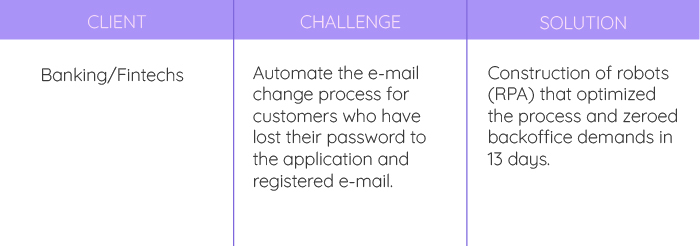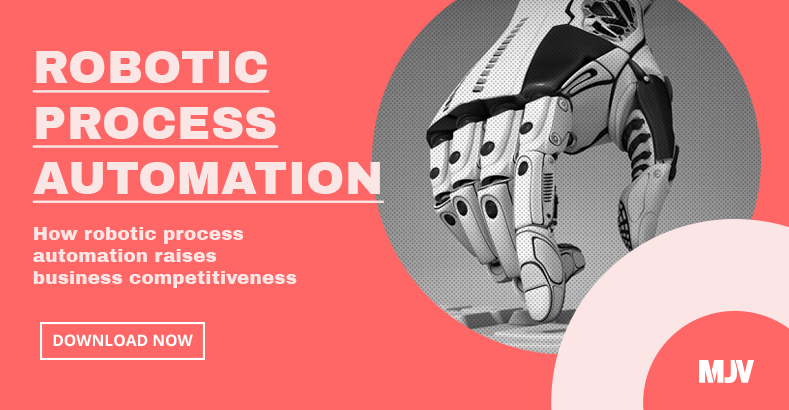Process Consulting: understand the benefits for your business
Innovation has long ceased to be an option for companies.
“Innovation” used to mean the difference between dictating trends in your sector or following the trail of your competition’s success, but today the term refers to a fundamental condition of existence for businesses in the volatile and demanding Digital Age.
But why are we starting a blog post about process consulting by talking about innovation? Because good process management is directly linked to how you promote innovation in your company.
Do you want to better understand the importance of process consulting in your business? Read this article to the end and learn the benefits of this type of service!
What does a process consultancy do?
When we mention process consulting, we are essentially talking about greater agility in the execution of activities and, mainly, saving time and resources by improving operational routines.
The objective of a process consultancy is to increase production capacity, thus enabling the company to expand operations and increase revenue.
We know that fast growth is the dream of any business owner or shareholder. During this journey upwards, it is almost always necessary to adapt the technological infrastructure and physical structure of the offices (depending on the type of business), which incurs added expenses.
This can end up making it difficult to control internal processes, in addition to measuring their effectiveness – since the parameters need to change to enable the expansion. That’s where process consulting comes in.
Consultancy services, as we know, give a “rested” view of the organization’s problems. Over time, however qualified your team is, it is natural to have certain aspects that are difficult for internal teams to identify.
An external consultant brings an impartial and free view of issues common to day-to-day business, offering a holistic diagnosis about the functioning of the process and the interactions of the team within the existing routines, ensuring an effective solution.
How does process consulting work?
The set of activities that governs good process management requires a high level of organization. And it is only possible to measure this quality through continuous monitoring of the stages involved.
For this, it is necessary that your company has well established objectives to be achieved, a clear vision about the tasks that actually bring results and the available resources to be employed in this endeavor.
First, it is necessary to identify the areas with the greatest deficiencies in the processes so the processes may be optimized and prioritized correctly.
Process consulting then comes into play, combining problem-solving, technology and management approaches to create optimal strategies in corporate routines.
Below, we list some of the main procedures and strategies used during process consulting:
Mapping – gathering information about current processes, including interviews and other qualitative approaches with the stakeholders involved.
Critical points assessment – after reaching the process map, the time has come to assess the most bureaucratic points or those with the greatest evidence of inefficiency, in addition to proposing actions to mitigate or eliminate these bottlenecks.
Modeling – organization, design or redesign of the process flow.
Mapping opportunities for improvement – identifying bottlenecks and triggers of wasted resources, which prevent increased productivity.
Standardization – formalization of the process steps with employees.
Deployment – definition of how the process will be carried out.
Monitoring – selection of performance indicators for measuring results.
Why invest in a process consultancy?
In the previous item, you got a glimpse of the process consultancy step by step. As we have seen, the service is capable of making a company more productive through dynamic diagnostics, adjustments and monitoring of routines.
Now, let’s talk a little more about who the process improvement is for and what benefits it brings.
Is process consulting for me? There is a misconception that process consulting is a big business thing. That’s a mistake. Consultancy in process improvement generates benefits for businesses of all sizes, from micro companies to large corporations. This is because it works very well in both the macro and micro context. Let’s explain: a consultancy need not be just “top-down”. It is possible to address problems at the departmental level, immerse yourself in the pains of the team, structure better routines, prove the results and then escalate changes throughout the rest of the company.
There are also those who believe that all processes are running at 100% efficiency. Settle down, you may be surprised at the improvement margin that an apparently smooth running process can have.
Remember: according to the continuous improvement management model, anchored in the ideal of total quality control (including the PDCA cycles), there are always opportunities for constant improvement of processes, products and services.
Remember Agile? Ah, so you’re on the right track!
But back to the main subject of this blog post: what are the advantages of process consulting? Here they are:
- Elimination of errors and bottlenecks during the execution of processes.
- Improved efficiency and increased production capacity.
- Standardization and greater transparency on the stages of the processes.
- Increase and establishment of quality standards in processes.
- Resource optimization and waste reduction.
- Strategic alignment of processes to the organization’s objectives.
- Increased capacity to promote scalable changes in processes.
Now that you already know what the process consulting service consists of and how your company can enjoy its benefits, learn how MJV’s process management consulting can help you optimize your organization’s processes!
How does MJV’s Process Management Consulting work?
Process optimization is closely associated with a number of touch points in an organization. For this reason, our process management expertise comprises 3 interdisciplinary factors: innovation, automation and management .
But what does that mean? For us, this is what it means within the process consultancy:
Process innovation is the capacity for procedural adjustments or the creation of new (more optimized) processes to produce a competitive advantage for an organization. It is about the promotion of new models and sources of revenue.
Process automation is the ability of an organization to achieve the same result using fewer resources, or to achieve better results with reduced investments. It is directly associated with improvement to the cost-benefit structure of routines.
Process management is the management of teams’ acculturation dynamics in the face of new dynamics. It is important to manage stakeholders’ adaptation to the new requirements in order for this to work.
Now that you understand the criteria, check out our services!
Process review and redesign
Design Thinking, the core business service of MJV, is at the heart of innovation processes. And, as you saw here, we strongly believe in innovation through processes.
However, to generate more adherent processes for internal and external customers, it is necessary to dive deeply into the business context and understand the pain points of this journey. Therefore, the Immersion and Ideation phases of Design Thinking are fundamental to mapping opportunities for improvement, review and reconstruction of processes.
Robotic process automation
When we talk about robotic process automation, we are talking about increasing production capacity, accelerating processes and optimizing resources.
RPA is the automation of repetitive processes using software such as management systems (ERP / SAP). Building a robot to perform mechanical and sequential interactions has a direct impact on productivity and cost reduction.
In addition, by spending less time on processes where machines easily exceed the production of a human being, it is possible to allocate employees in the development of new ideas and projects. “Ok, and where can I start?”
Well, common applications for RPA include:
- Reporting automation
- Bills to pay and receive
- Payroll
- Recruitment and selection
- Server and application monitoring
- Software deployment
Want to know what processes you can automate now with RPA? Click here!
What about hyper-automation?
Hyper-automation is the union of technologies such as Artificial Intelligence, Machine Learning, and methods such as Agile, Lean, Six Sigma and Design Thinking with RPA. This modality surpasses the results of a conventional RPA process, enabling complete automation of tasks and ensuring a better return on investment.
Technology offers an extraordinary ability to reduce manual hours in complex processes. The difference of this solution is that hyper-automation transcends the traditional binary logic of programming and uses cognitive technologies to interpret data and suggest optimized alternatives for decision making. Using only robots.
Learn more about the benefits of hyper-automation here .
Business Process Management (BPM)
The term Business Process Management refers to a set of process management activities, performed in order to optimize resources and carry out actions focused on the result. And how is it done? Improving internal processes and creating a holistic view of the entire business chain .
In addition to helping organizations achieve their goals, process management works by monitoring performance indicators, in order to create a continuous improvement cycle.
Going to the automation side may be a good choice. Companies that use good systems and software facilitate process control and protect “the ROI” of operations. In this way, it becomes easier to understand the performance of the processes, their reflexes in the strategy and in the results of the business.
What results can we expect from a process consultancy?
To understand what results you can achieve with process consulting, take a look at our successful cases in process management!
CASE – Automated Backoffice
Automation of the process of changing registration emails and passwords in the back office area

The back office area had a high volume of calls and little completion – that is, a high incidence of congested demand. To solve this problem, we carried out the installation and configuration of the RPA (development infrastructure) environment, the improvement of the pre-automation processes and the creation of the bot, the operation manuals and all the technical documentation.
Results
- Optimization of the process and elimination of the impounded demand for requests to change login and password.
- 15,000 automated hours / year.
- 10,300 hours / year after backlog reset.
- Release of 3 employees to perform new functions.
- Saving 5 new hiring resources.
Important: Align your expectations
Different steps have different results – and this requires an alignment of expectations. Note that a case of process redesign (prior to automation) has much more perceptive results, while the implementation of a bot, for example, offers concrete numbers of hours or cost savings.
A department that wastes resources flirts with inefficiency and is subject to cost cuts. Many businesses are also too committed to putting out fires from day to day and can’t stop to think of smarter ways to improve their operational routines.
If any of these situations is your case or if you have identified an opportunity for improvement in the cases we have shown here, talk to one of our experts and find out which is the best solution for your business!

